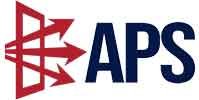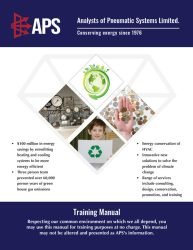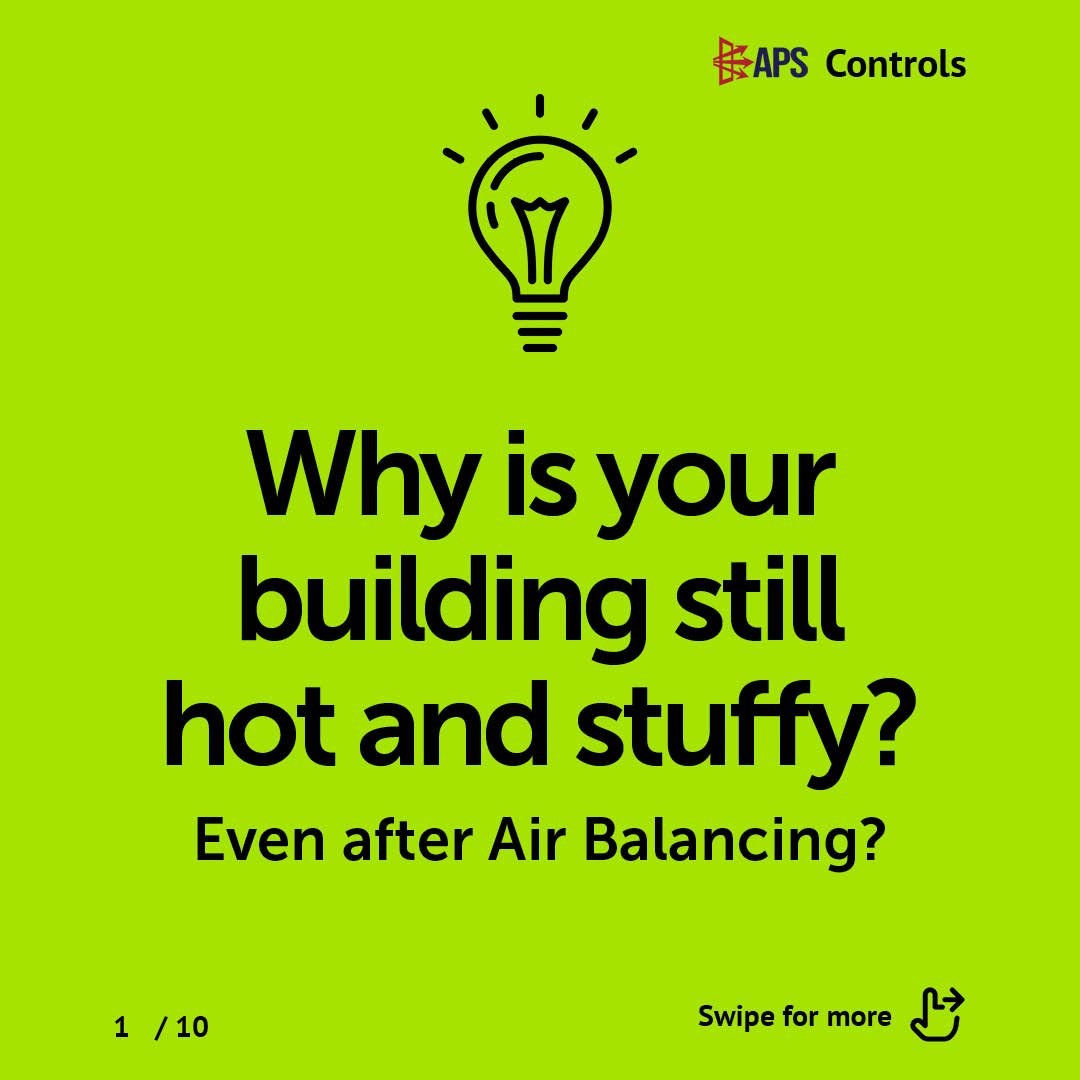

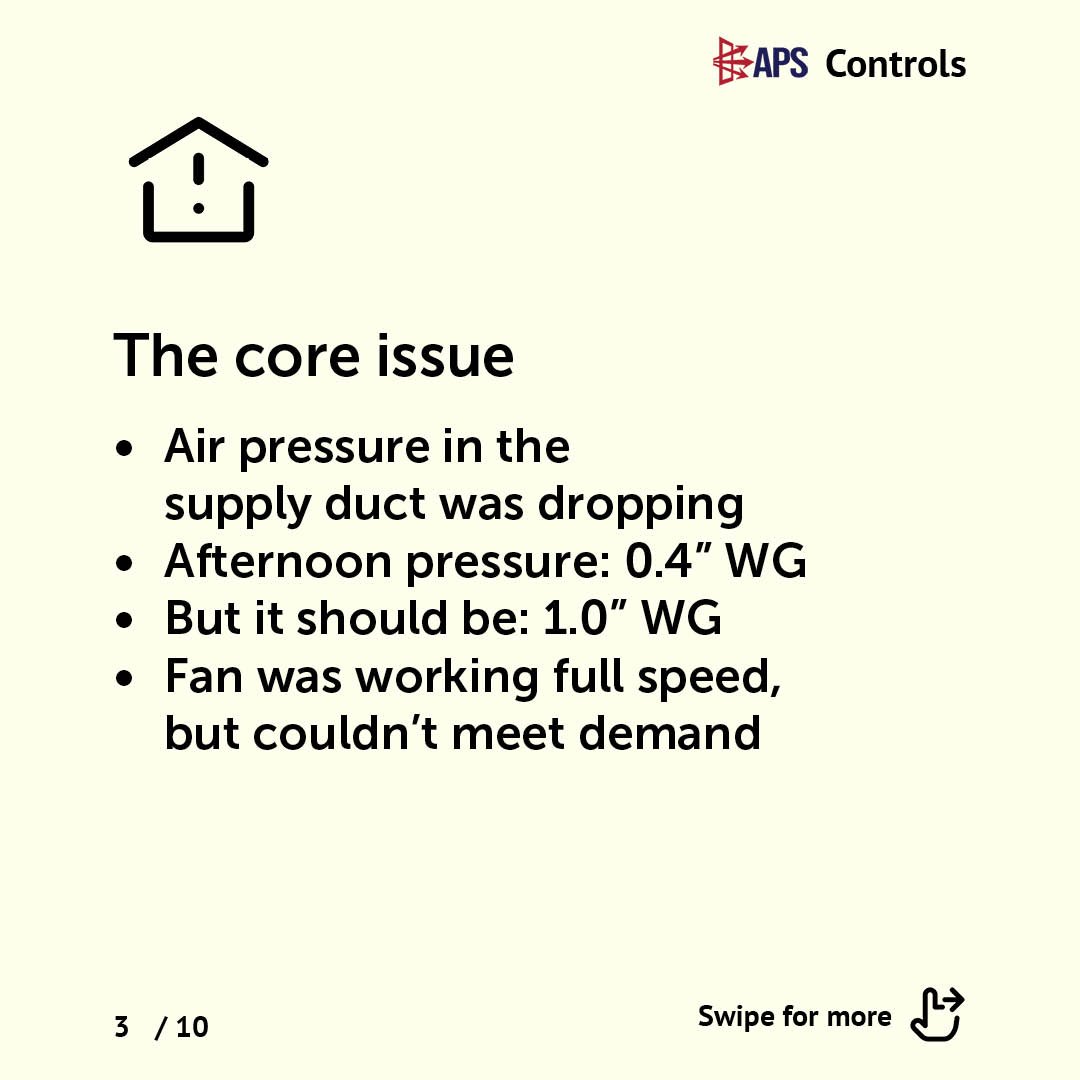
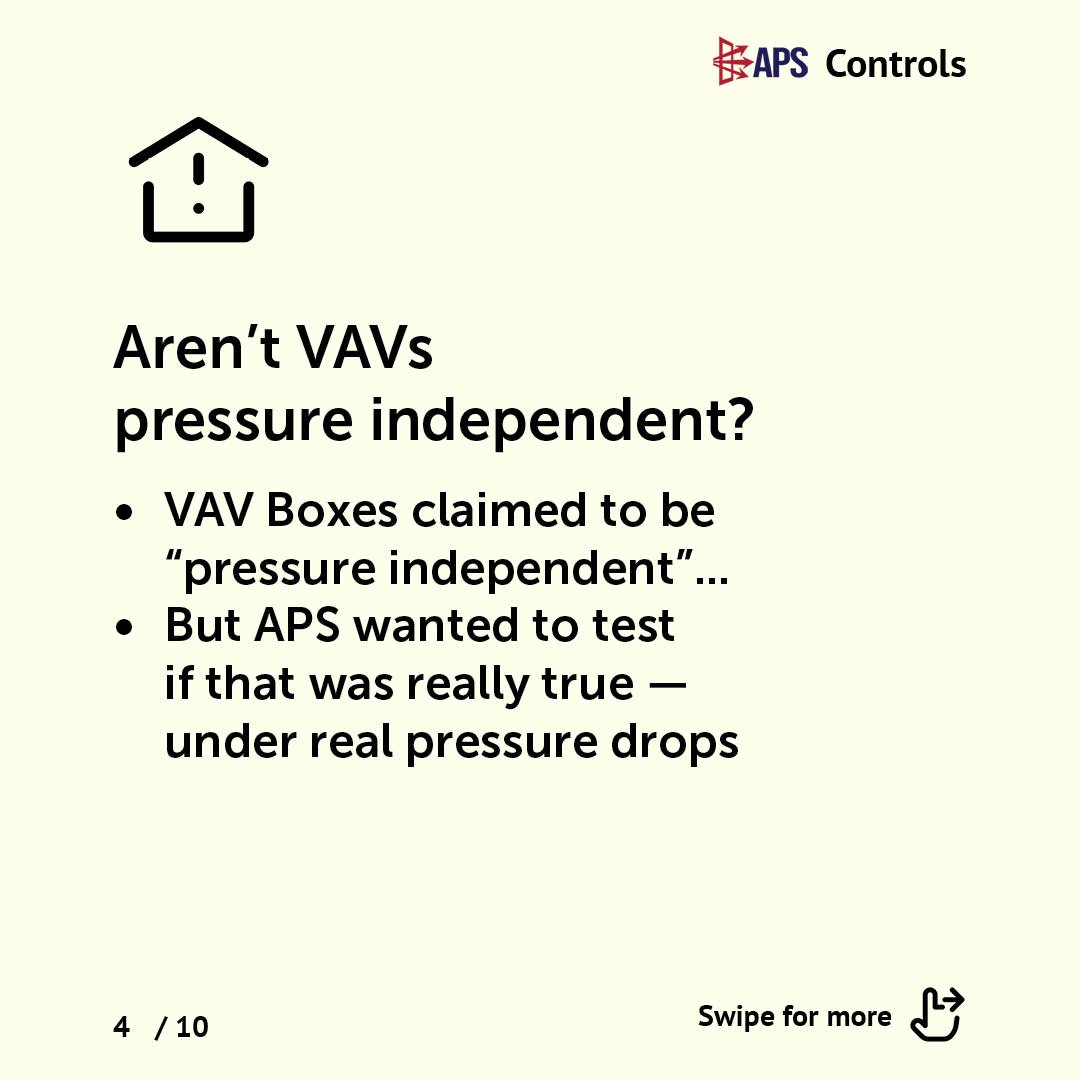
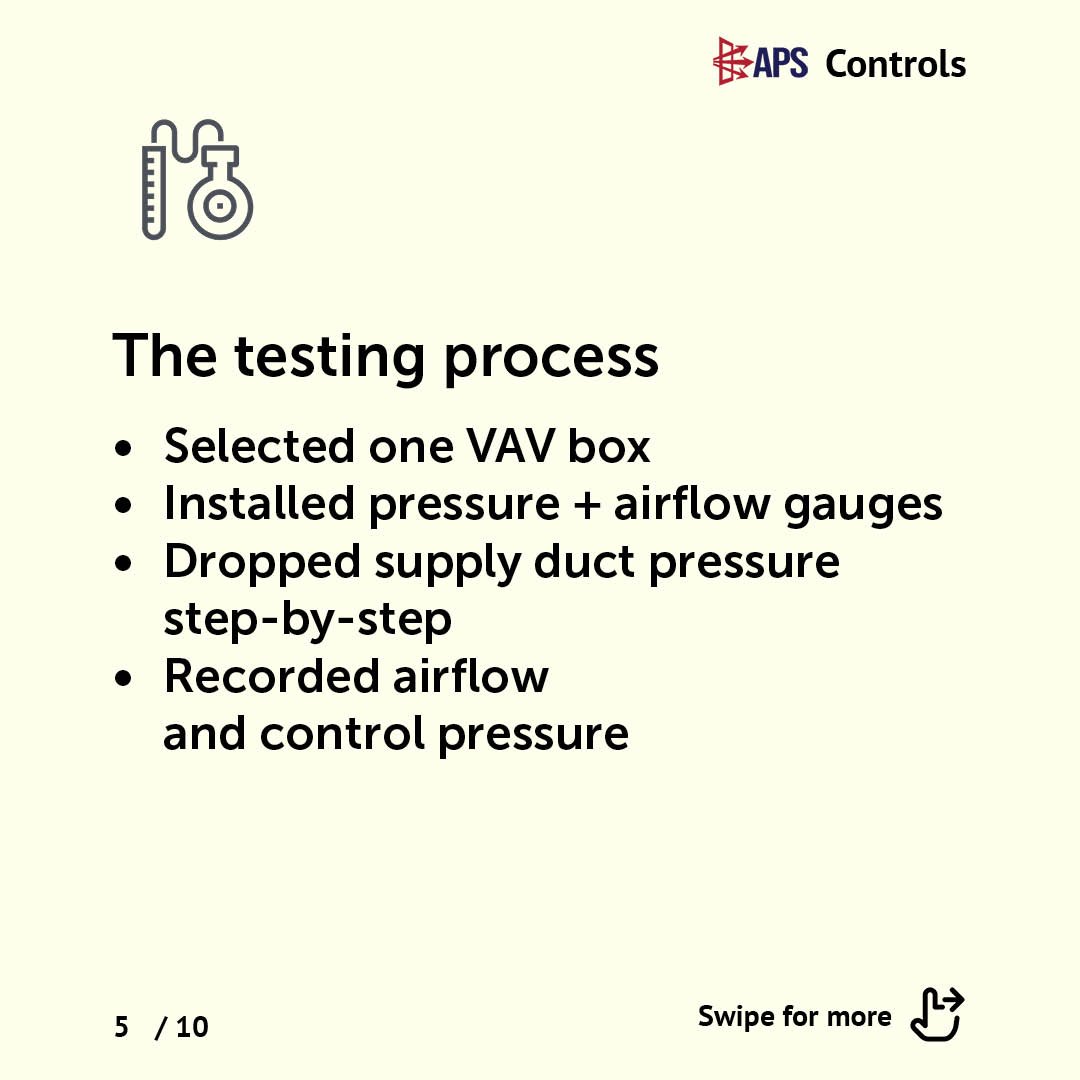
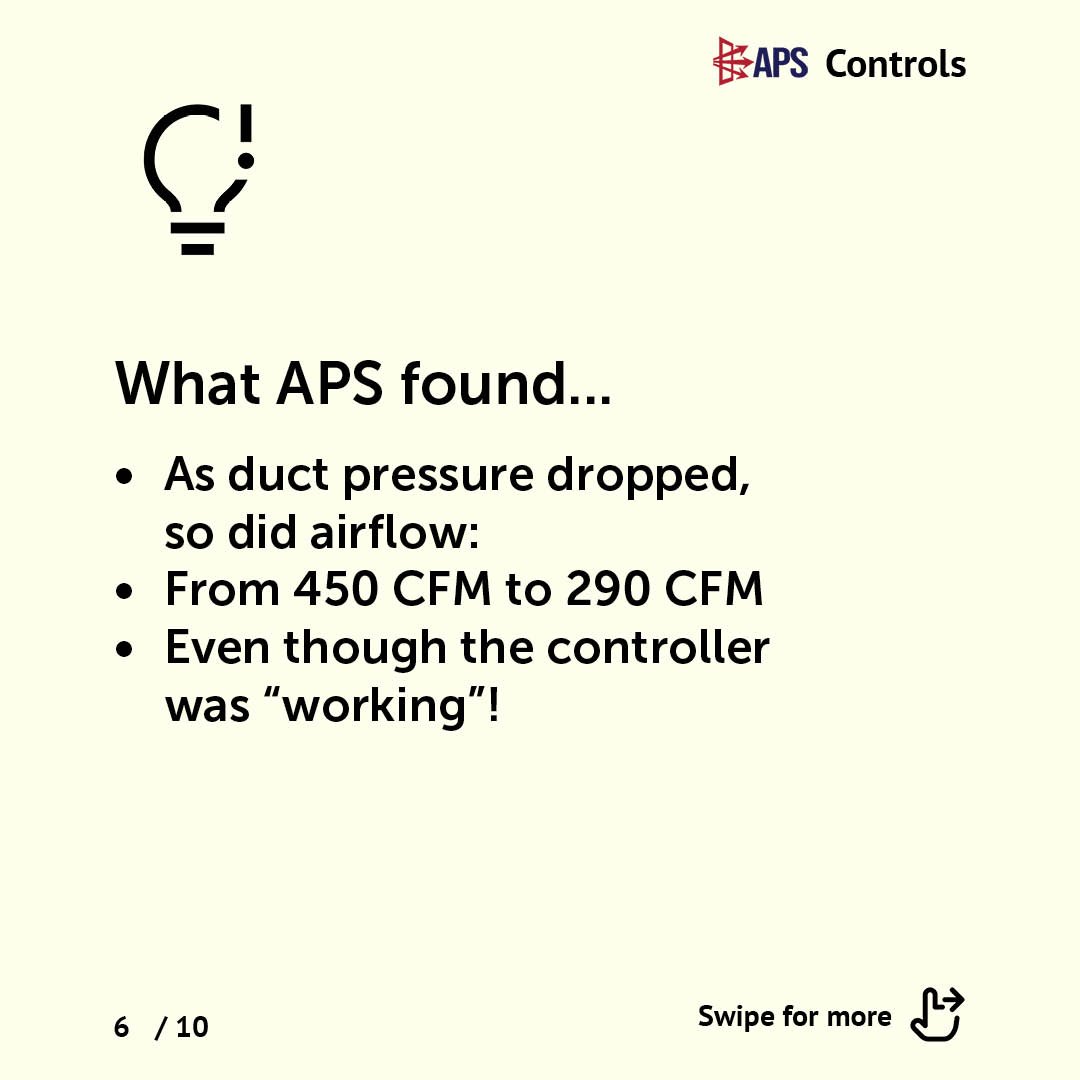
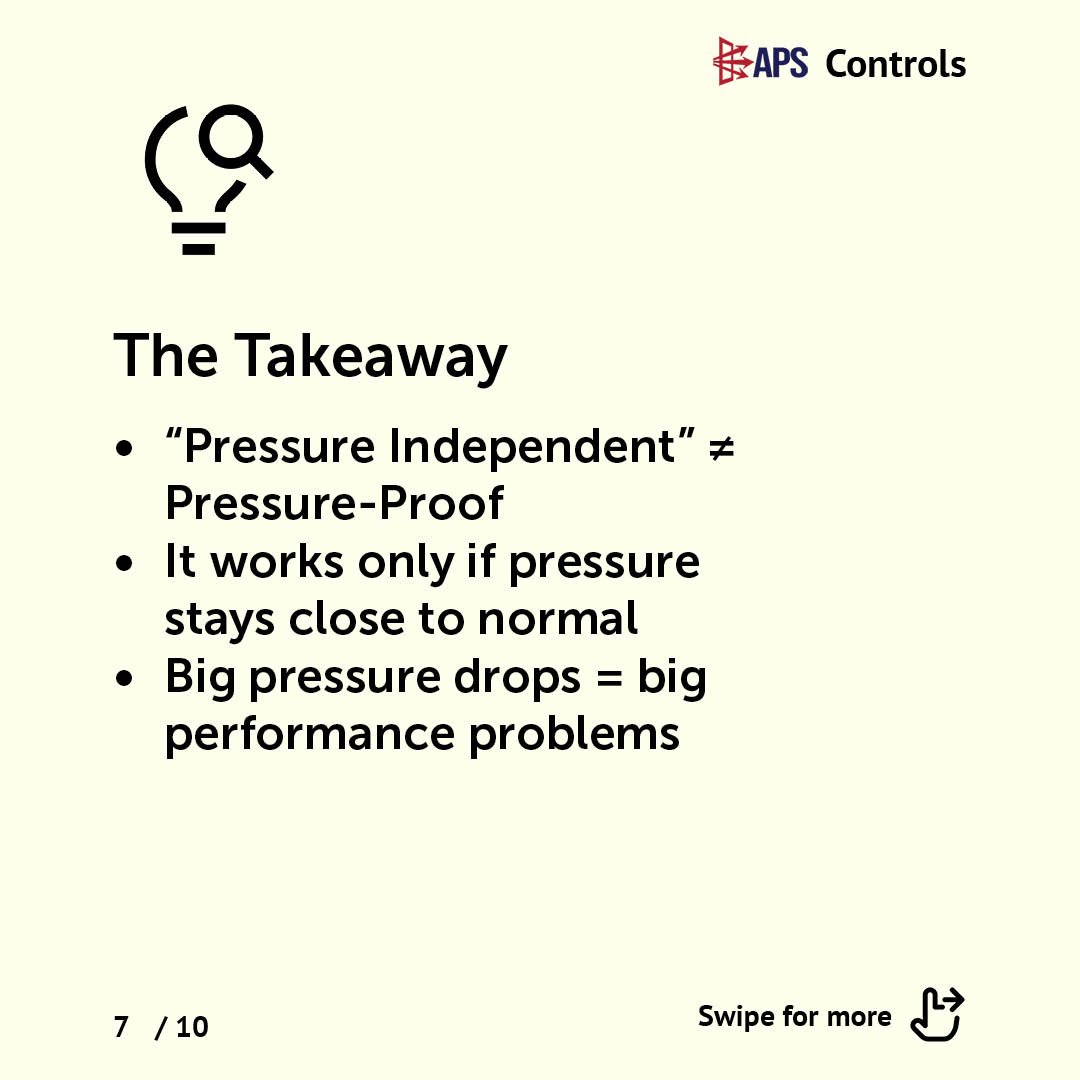

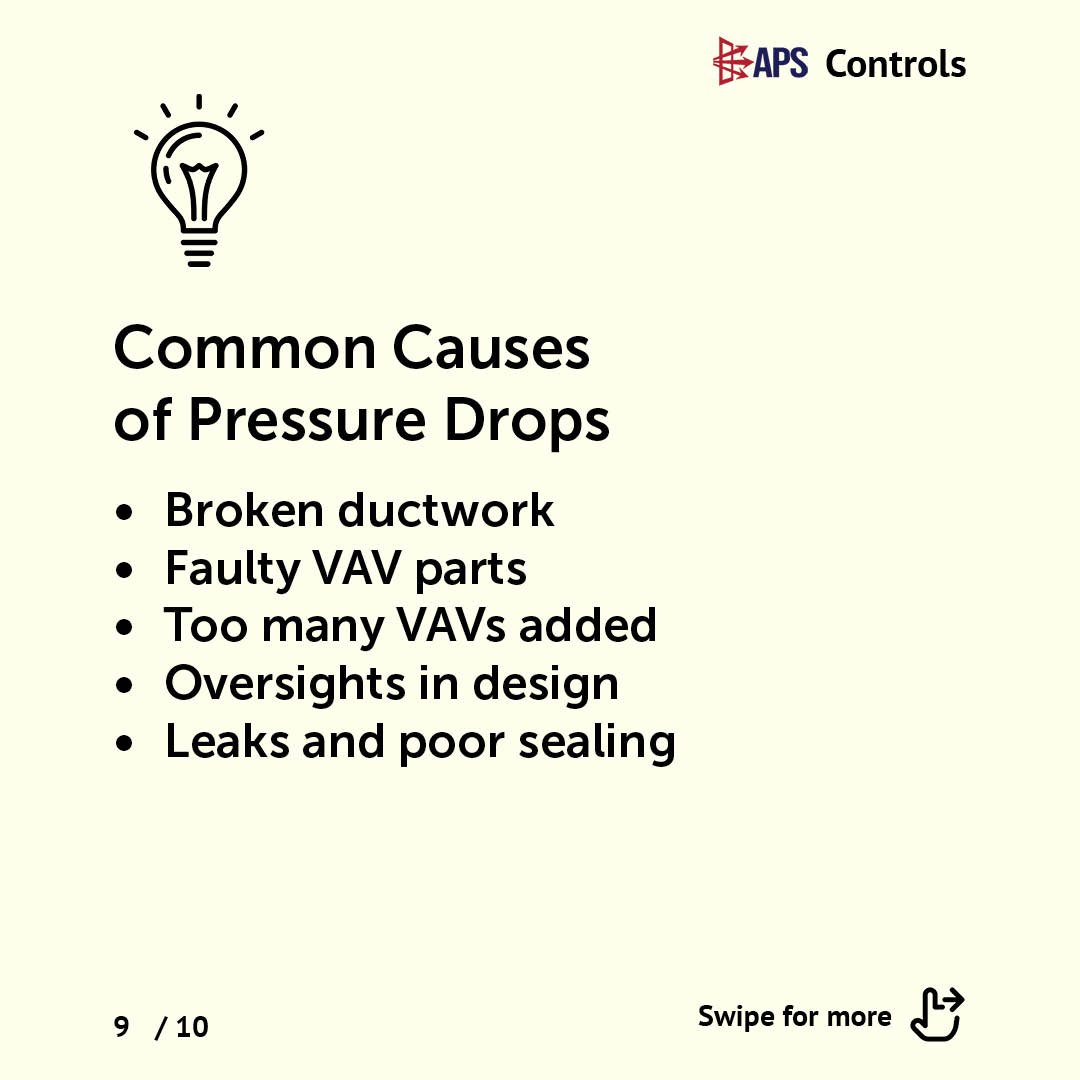
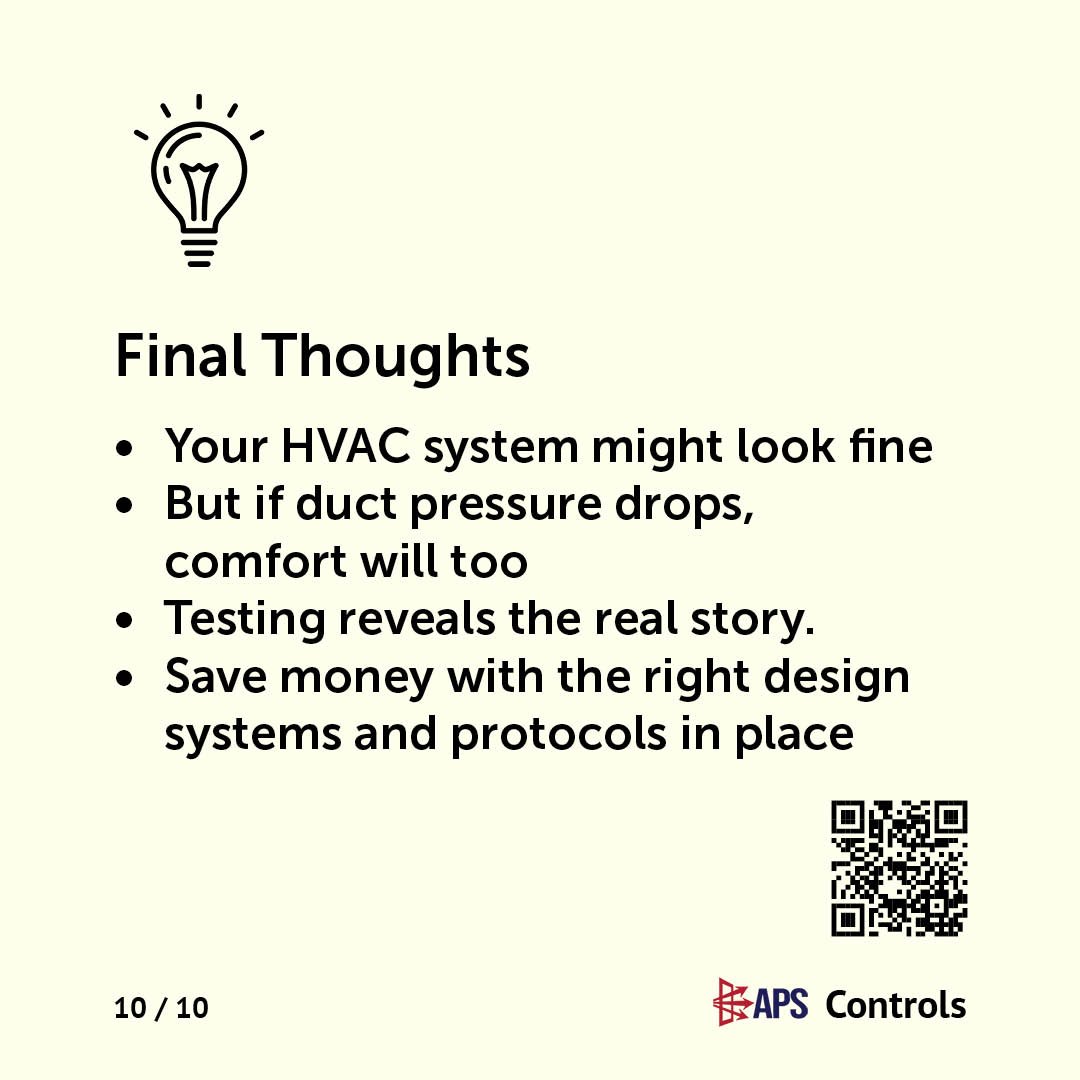
The Situation (The Problem)
A building was getting too hot and stuffy, especially in the afternoon. Three companies tried to fix it by adjusting the air conditioning system (specifically the VAV boxes, which control how much air flows into a space), but the problem didn’t go away.
So, APS (Analysts of Pneumatic Systems) was called in to determine what was going wrong.
What APS Found
APS discovered that in the afternoons, the air pressure inside the system’s supply duct dropped way below what it should be (from 1.0″ WG down to 0.4″ WG – think of this like water pressure dropping in your plumbing).
Even though the fan was working at full capacity (with its intake vanes wide open), it still couldn’t push enough air to meet demand. The building was asking for more airflow than the system could provide.
Why This Matters
The VAV boxes are supposed to be “pressure independent,” meaning they’re designed to keep airflow steady even if the pressure changes a bit. But APS wanted to know: How true is that, really, when the pressure changes a lot?
What APS Did (Test Procedure)
- They picked one VAV box to test.
- They installed gauges to measure air pressure and flow.
- They gradually lowered the air pressure in the supply duct and recorded how much air still got through.
What They Observed
- The thermostat kept asking for maximum cooling during the whole test.
- As air pressure dropped, the air flowing through the VAV box also dropped.
- Even when the VAV box was technically “in control,” it could only push less and less air.
Specifically, airflow dropped from 450 CFM (cubic feet per minute) to 290 CFM as pressure dropped.
Conclusions (What It All Means)
- When pressure dropped, airflow dropped by over 35%, even though the system was supposedly still “under control.”
- The airflow controllers were doing exactly what they were designed to do (responding proportionally), but that doesn’t mean everything worked well.
- The idea that VAV boxes are totally “pressure independent” is misleading—it only holds true if the pressure changes slightly
- Air balancing technicians must ensure the pressure is right when they calibrate the system, or their work might be off.
- If pressure drops too much, VAV boxes can’t do their job properly, even if they’re technically working fine.
- Some common causes of pressure dropping too much include:
- Broken or leaking ductwork
- Too many VAV boxes have been added to the system
- Faulty components
- Poor system design
- This is why buildings might be comfortable in the morning, but overheat in the afternoon — the cooling system can’t keep up as more people and equipment heat the space.
In Short
Even systems that should be able to handle pressure changes can fail when the pressure drops too far. The term “pressure independent” doesn’t mean immune to pressure problems. Proper pressure must be maintained for the system to work correctly, especially in bigger buildings with changing daily demands.
